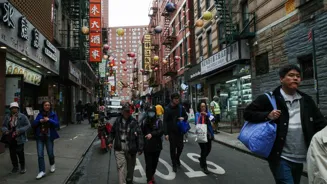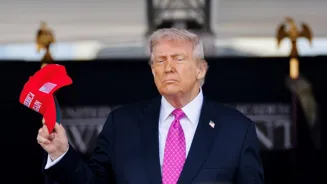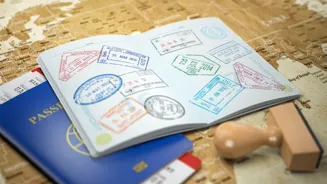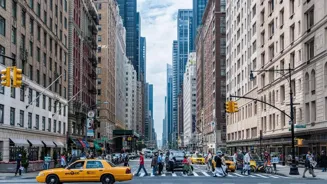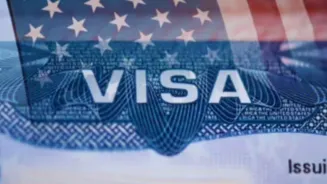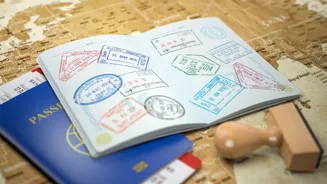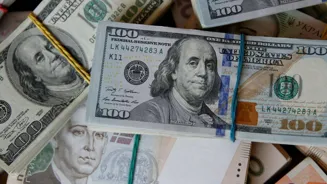What is the story about?
The US could soon require applicants for certain business or tourist visas to pay up to $15,000 (nearly Rs 13.2 lakh) to enter the country.
The move, which may make the procedure unaffordable for many, is aimed
at curbing visitors whooverstay their visas in the US.
ALSO READ | Has Trump made US world's worst tourism destination this year?
According to a Federal Register notice, the programme gives US consular officers the authority to impose bonds on visitors from countries with high rates of visa overstays.
As per regulations from the US Department of Homeland Security and Immigration and Customs Enforcement, tourists and business travellers would get their bonds back only when they leave the US, become naturalised citizens, or die.
But why is the move being implemented? Which countries will be affected? How will the process work?
We answer all these questions below:
In a notice, the US State Department announced that it will launch a 12-month pilot programme in which applicants from countries with high visa overstay rates and weak internal document security may be required to pay bonds of $5,000, $10,000 or $15,000 when applying for a visa.
According to an official document obtained by The Washington Post, the programme aims to “protect America’s borders and the American people by holding foreign visitors accountable for departing the United States on time.”
Travellers who do not leave the US before their visa expires will lose their bond, while those who follow visa rules will get their money back.
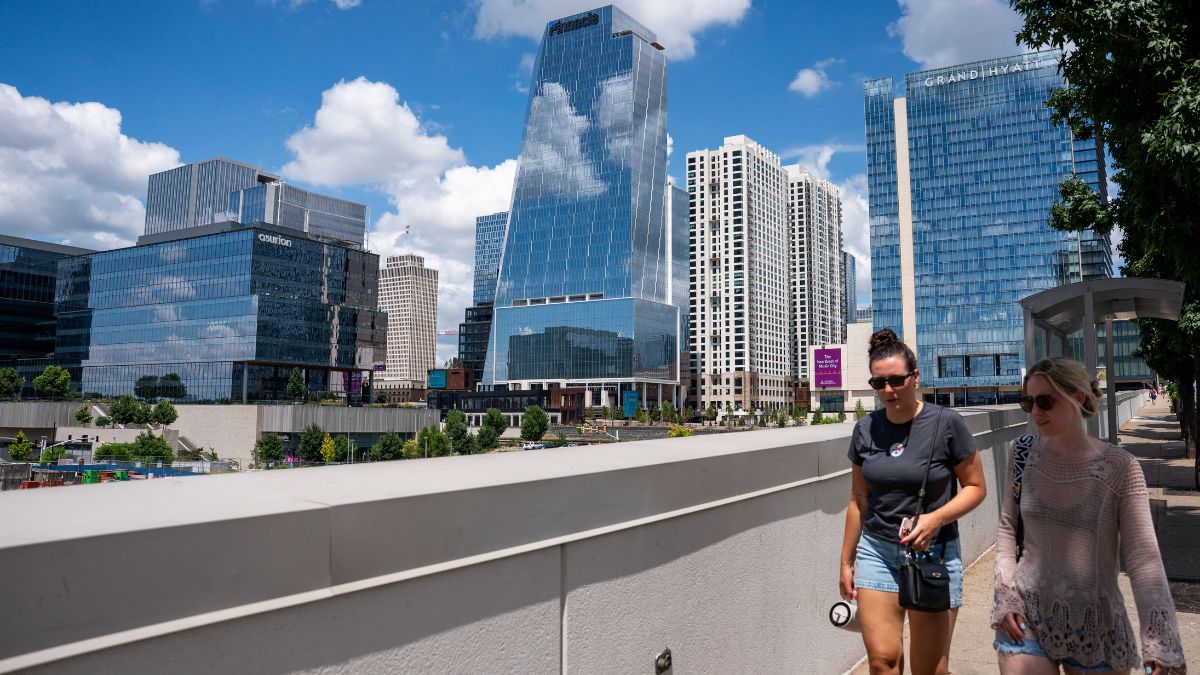
“Aliens applying for visas as temporary visitors for business or pleasure and who are nationals of
countries identified by the department as having high visa overstay rates, where screening and vetting information is deemed deficient, or offering citizenship by investment, if the alien obtained citizenship with no residency requirement, may be subject to the pilot programme,” the notice said.
Until now, consular officers already had the power to impose bonds on visa applicants, but the State Department’s official Foreign Affairs Manual had stated that “such bonds will rarely, if ever, be used,” according to the notice.
The online notice will be published in the print edition of the Federal Register and is expected to come into effect on August 20, according to The New York Times.
The move comes as the Trump administration continues to tighten visa requirements for foreign applicants.
The bonds will apply to travellers from countries with very high visa overstay rates.
The official notice has not named any specific countries or explained how visitors would be able to claim their refunded
bond when leaving the United States.
ALSO READ | Is Trump's 'polarising rhetoric' driving tourists away from US?
The US State Department has said that the list of affected countries will be announced on the “Travel.State.Gov” website at least 15 days before the pilot programme begins.
A State Department spokesperson told Reutersthat countries will be selected based on “high overstay rates, screening and vetting deficiencies, concerns regarding acquisition of citizenship by investment without a residency requirement, and
foreign policy considerations”.
The department has not provided an estimate of how many applicants might be impacted.
Notably, Donald Trump has made tackling illegal immigration a key focus of his presidency. In June, he issued a travel ban that fully or partially blocks citizens of 19 countries from entering the US on national security grounds.
Many of the countries named in Trump’s travel ban also have high overstay rates, including Chad, Eritrea, Haiti, Myanmar, and Yemen, Reuters reported.
The US Travel Association, which represents major companies in the tourism sector, has estimated that the visa bond pilot programme is likely to be limited in scope, affecting around 2,000 applicants, mainly from a small number of countries with relatively low travel volumes to the US.
Several African countries, including Burundi, Djibouti, and Togo, also recorded high overstay rates, according to data from US Customs and Border Protection for the 2023 fiscal year.
The US Travel Association also
warned that the fee could deter travel, stating that “if implemented, the US will have one of, if not the highest, visitor visa fees in the world.”
The announcement comes at a time when the US is seeing a notable drop in tourism. According to The Guardian, the country recorded an 11 per cent fall in foreign visitors in March.
The tourism sector is expected to lose billions of dollars this year as a result of the Trump administration’s policies. Travel from Canada and Mexico has dropped by
20 per cent year-on-year, according to the US Travel Association.
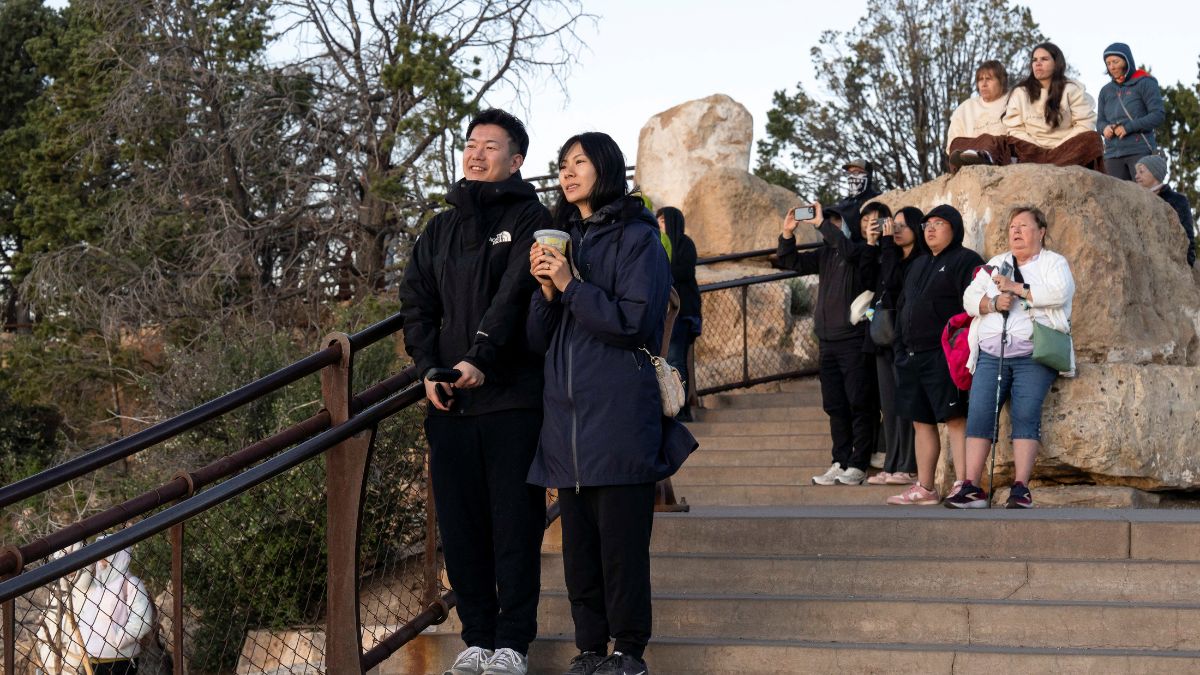
There have also been growing reports of tourists and visitors with valid visas being detained by US Immigration and Customs Enforcement (Ice).
Recently, users on social media described Las Vegas as a “ghost town” after photos and videos showed empty roads and once-crowded casinos.
According to a Wall Street Journalreport, tips for service workers in the city have dropped by 50 per
cent due to the fall in tourism.
With inputs from agencies
The move, which may make the procedure unaffordable for many, is aimed
ALSO READ | Has Trump made US world's worst tourism destination this year?
According to a Federal Register notice, the programme gives US consular officers the authority to impose bonds on visitors from countries with high rates of visa overstays.
As per regulations from the US Department of Homeland Security and Immigration and Customs Enforcement, tourists and business travellers would get their bonds back only when they leave the US, become naturalised citizens, or die.
But why is the move being implemented? Which countries will be affected? How will the process work?
We answer all these questions below:
US visa bonds: What you need to know
In a notice, the US State Department announced that it will launch a 12-month pilot programme in which applicants from countries with high visa overstay rates and weak internal document security may be required to pay bonds of $5,000, $10,000 or $15,000 when applying for a visa.
According to an official document obtained by The Washington Post, the programme aims to “protect America’s borders and the American people by holding foreign visitors accountable for departing the United States on time.”
Travellers who do not leave the US before their visa expires will lose their bond, while those who follow visa rules will get their money back.

The move is aimed at curbing visitors who overstay their visas in the US. Reuters/File Photo
“Aliens applying for visas as temporary visitors for business or pleasure and who are nationals of
Until now, consular officers already had the power to impose bonds on visa applicants, but the State Department’s official Foreign Affairs Manual had stated that “such bonds will rarely, if ever, be used,” according to the notice.
The online notice will be published in the print edition of the Federal Register and is expected to come into effect on August 20, according to The New York Times.
The move comes as the Trump administration continues to tighten visa requirements for foreign applicants.
Which countries will be affected?
The bonds will apply to travellers from countries with very high visa overstay rates.
The official notice has not named any specific countries or explained how visitors would be able to claim their refunded
ALSO READ | Is Trump's 'polarising rhetoric' driving tourists away from US?
The US State Department has said that the list of affected countries will be announced on the “Travel.State.Gov” website at least 15 days before the pilot programme begins.
A State Department spokesperson told Reutersthat countries will be selected based on “high overstay rates, screening and vetting deficiencies, concerns regarding acquisition of citizenship by investment without a residency requirement, and
The department has not provided an estimate of how many applicants might be impacted.
Notably, Donald Trump has made tackling illegal immigration a key focus of his presidency. In June, he issued a travel ban that fully or partially blocks citizens of 19 countries from entering the US on national security grounds.
Many of the countries named in Trump’s travel ban also have high overstay rates, including Chad, Eritrea, Haiti, Myanmar, and Yemen, Reuters reported.
Several African countries, including Burundi, Djibouti, and Togo, also recorded high overstay rates, according to data from US Customs and Border Protection for the 2023 fiscal year.
The US Travel Association also
Is US facing decline in tourism?
The announcement comes at a time when the US is seeing a notable drop in tourism. According to The Guardian, the country recorded an 11 per cent fall in foreign visitors in March.
The tourism sector is expected to lose billions of dollars this year as a result of the Trump administration’s policies. Travel from Canada and Mexico has dropped by

The US is seeing a notable drop in tourism. Reuters/File Photo
There have also been growing reports of tourists and visitors with valid visas being detained by US Immigration and Customs Enforcement (Ice).
Recently, users on social media described Las Vegas as a “ghost town” after photos and videos showed empty roads and once-crowded casinos.
According to a Wall Street Journalreport, tips for service workers in the city have dropped by 50 per
With inputs from agencies
Do you find this article useful?
